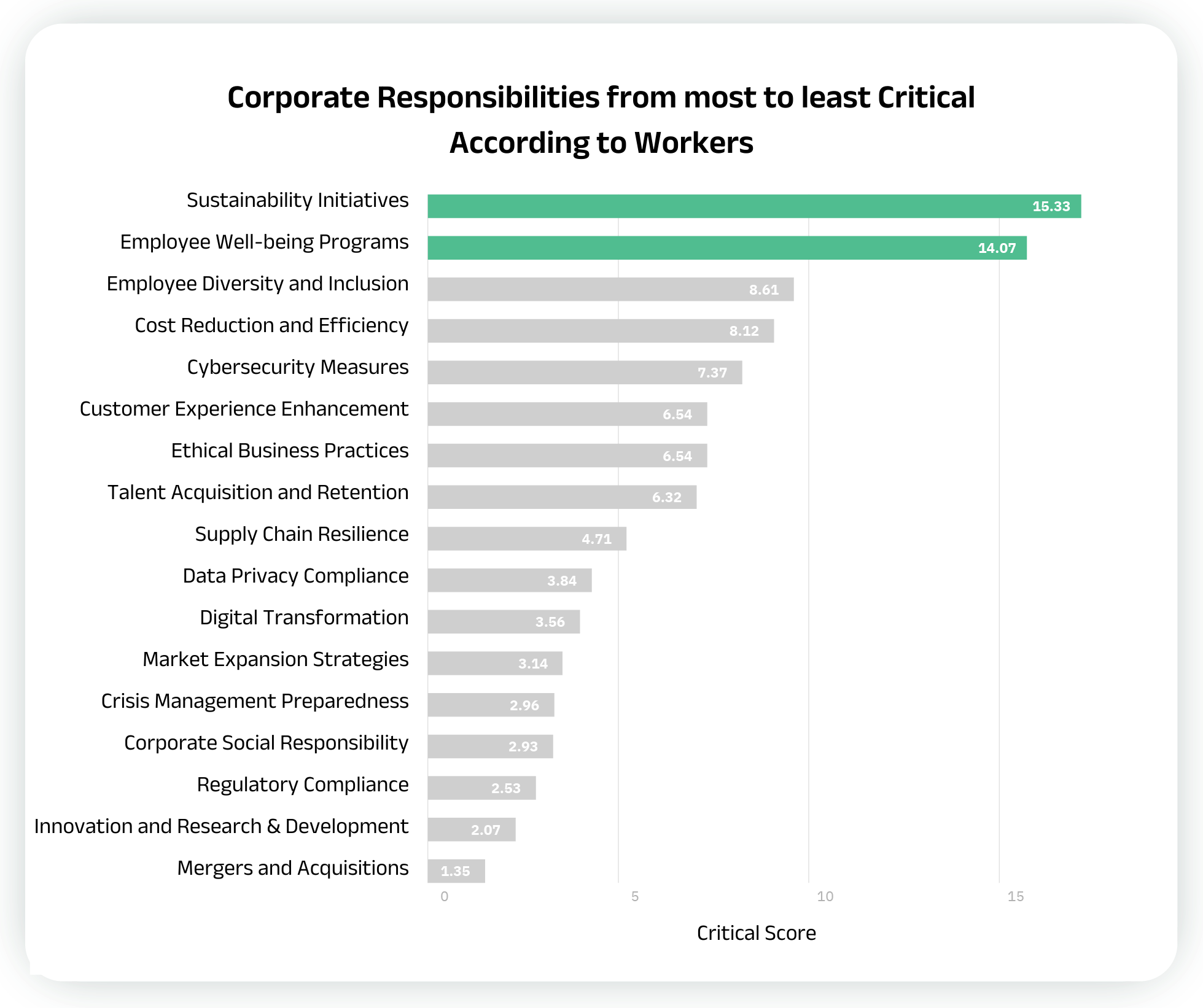MaxDiff Analysis
Understand the competitive landscape and uncover what is most and least important to your customers.

Find out what your customers like the most (and least)
Why you need a MaxDiff analysis
Preferences aren’t always tangible, especially when they are asked directly. Not only can preferences be elusive, but they can be difficult to interpret without a standard method of comparison.
A MaxDiff experiment solves many of the problems inherent to traditional methods of asking consumer preferences by forcing a series of real-life tradeoffs. At Gradient, we harness the combined power of MaxDiffs and Bayesian statistics to produce not only a rank order of consumer preferences, but also the magnitude of preferences
We show how a series of choices can reveal true preferences
Innovate: Use MaxDiff experiments to determine consumer preferences
With a series of choices replacing ranked lists, we can organize your customers’ true preferences
What is MaxDiff analysis?
How it works
A Max(imum) Diff(erences) analysis assesses a survey respondent’s preferences without directly asking them. Instead of ranking a long list of items which can be cumbersome and cognitively taxing, a MaxDiff has respondents choose the “best” and “worst” options out of a given set. Respondents are typically asked to designate the “best” and “worst” options across 10 choice tasks. For each choice task, a random subset of the total items are presented to reduce the cognitive burden on respondents.
Using Bayesian statistical analysis, we are able to calculate the probability of each item in a given set being chosen as the “best” in the list. Our output also allows us to pinpoint exactly how much one item is likely to be preferred over another.
The best part about a MaxDiff is its flexibility. Preferences can be rated in a number of ways, and are not limited to choosing the “best” and “worst” option. For example, if we wanted to know which qualities of a politician are most important when casting a vote, respondents would choose the “most important” and “least important” qualities in each choice task.
Simulate real-life trade-offs to uncover real preferences
Respondents choose “best” and “worst” options across ten choice tasks
We can tell you exactly how much one option is preferred over the other
You get inside the mind of your customers
What you get
-
Rank order of preferences
The ranking reflects the options ordered from most to least likely to be chosen as the “best” (or “most important,” “favorite,” etc.) from a subset of those options.
-
Magnitude of PreferencesThe magnitude of preference reveals exactly how much customers are likely to prefer one item over another.


Frequently asked questions (FAQ)
We typically recommend lists with 10-20 items and a maximum of 25. Larger lists of items either require bigger sample sizes or more choice tasks for each respondent.
If the list of items in a set is between 10 and 20, respondents will typically partake in 10 choice tasks. In each choice task, 5 items will be displayed for respondents to choose the “best” and “worst” from the subset.
MaxDiffs are an incredibly flexible methodology, allowing for a diverse range of preferences to be measured. Anything from products to positioning statements can be used to create a set of items for a MaxDiff.
The output of a MaxDiff is a ranking of options from “best” to “worst” using the provided set of items. Each item has a percentage indicating how likely it is for the item to be chosen as the “best” compared to the average item in the set.
Stories from the field
See how we’ve identified consumer preferences in the past.
.png)
Using a MaxDiff to Assess Public Opinions
Trendlines Public Opinion Survey
During the height of public discourse over who should be in control of public schools’ curriculum, Gradient utilized a MaxDiff to reveal the most pressing issues facing the K-12 public education system.
Not only did the MaxDiff experiment uncover and rank order the most critical issues, but it was clear that the American public believed 3 issues with the public education system were more important than the rest.
Read the full story →
Car Preferences MaxDiff
Trendlines Public Opinion Survey
If you asked a person to choose their most preferred car, it may be difficult given the number of options and suitable choices. Ranking more than 20 cars would be close to impossible to do accurately, especially for cars that respondents do not have strong preferences, good or bad, towards. To avoid these issues, Gradient used a MaxDiff to reveal America’s most and least preferred new cars.
Read the full story →.png)
Running Shoe Purchase Considerations
Client Case Study
Our client needed to know which attributes are most (and least) important when deciding on which running shoe to purchase.
Gradient designed and executed a MaxDiff experiment to reveal not only which attributes are most important to current and prospective customers, but also how much more important one attribute is compared to another. These insights helped our client decide which product lines to prioritize.
Who we’ve partnered with
The world's most forward-looking organizations trust Gradient





